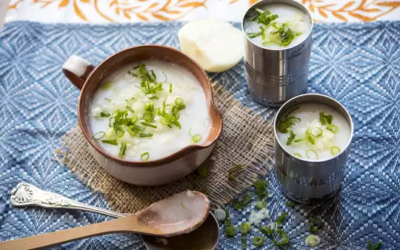Tamil New Year, is the first day of year on the Tamil calendar and traditionally celebrated as a festival. The festival date is set with the solar cycle of the lunisolar Hindu calendar, as the first day of the Tamil month Chithirai. It therefore falls on or about 14 April every year on the Gregorian calendar. The same day is observed by Hindus elsewhere as the traditional new year, but is known by other names such as Vishu in Kerala, and Vaisakhi or Baisakhi in central and northern India.
This is also celebrated by Tamil Hindus outside Tamil Nadu and Puducherry, such as in Sri Lanka, Malaysia, Singapore, Reunion, Mauritius and other countries with Tamil diaspora.
This day is observed as a family time. Households clean up the house, prepare a tray with fruits, flowers and auspicious items, light up the family Puja altar and visit their local temples.
People wear new clothes, prepare varities of neivedyam offer it to God before eating, wear and children go to elders to pay their respects and seek their blessings, then the family sits down to a vegetarian feast.
Neivedyam offered to God plays a very significant role.
Naivedya (Sanskrit: नैवेद्य) is a Sanskrit word meaning ‘offering to God’.
The food that is first offered to God is called naivedya and ultimately what we receive from God is called prasad.
Great care is taken when food is cooked for the deity.
The food offered will naturally be pure and the best.
The food is first placed before a deity and specific prayers are offered with accompanying rituals. Afterwards, the food is considered as having been Blessed by God, and has officially become the sanctified प्रसाद (prasāda)
The food that is offered symbolically stands for our ignorant consciousness, which we place before god for spiritual enlightenment. After he suffuses it with knowledge and light and breathes a new life into our bodies, it makes us divine.
So the food offered directly to the deity is considered as ‘Maha Prasada’ (Great Offering) and it is considered extremely auspicious to be able to partake in a morsel of that.
Offering of food items forms part of the ‘Upacharas’ or Services/Offerings offered to a deity who has had the Prana Prathista ritual performed to it. Therefore the murthi or vigraha is revered as a living entity who is offered food, fruits, and betelnut among others.
Temples usually have stricter worship routines that include offering upacharas like naivedyam multiple times a day and most temples will allow only trained pujaris to cook the naivedyam.
Offerings of food in home shrines are relatively simpler though the Hindu having observed cleanliness of body and mind will attempt to do so using sattvik items and in a purified space. A common practice is to mix the offered naivedyam back into the remaining food before partaking it and it is distributed to the devotees who are present in the temple.
Scientific Reasons:
The activity may be changed into sacrifice. This reminds us that food is not merely intended to appease our taste. This act also purifies the food.
food is digested through the gastric fire.
The life force within us as the five physiological functions like respiratory, excretory, circulatory, reversal and digestive systems are getting purified and best.
Interesting Facts:
Before we partake of our daily meals we first sprinkle water around the plate as an act of purification. Five morsels of food are placed on the side of the plate acknowledging the debt owed by us to the Divine forces (devta runa) for their benign grace and protection, our ancestors (pitru runa) for giving us their lineage and a family culture, the sages (rishi runa) as our religion and culture have been “realized”, maintained and handed down to us by them, our fellow beings (manushya runa) who constitute society without the support of which we could not live as we do and other living beings (bhuta runa) for serving us selflessly.
Learned people recite the following Gita verses while having meals so that this Thinking of God before taking food makes it a spiritual act.
Mantra-
Brahmarpanam Brahma havir brahmaagnou brahmanaayutham
Brahmaiva taena gantavyam Brahma karma samaadhina
Meaning-
The ladle is God , the oblation is God, it is offered by God in the fire, which is God.
God shall be attained by him who is absorbed in God as the act of such sacrifice.
Sprinkle water on the food, place a tulasi leaf and chant
Mantra-
Om bhoorbhuvassuvah amrutho(u)pasvaranamasi
Pranaya svaha apanaya svaha vyanaya svaha
Udanaya svaha samanaya svaha brahmane svaha
Meaning-
The three worlds are pervaded by the Lord, the creator.
I offer this to prana (respiratory system)
I offer this to apana (excretory system)
I offer this to vyana (circulatory system)
I offer this to udana (reversal system)
I offer this to samana (digestive system)
Mantra-
Aham vais(h)vaanaro bhoothvaa praaninaam daehamaas(h)rithah
Praanaapaana samaayukthah pachaamyannam chathurvidham
Meaning-
Becoming the fire of life in the bodies of living creatures and united with Prana (ingoing) and Apana (outgoing) breaths, I digest the four kinds of food. The four kinds of food are
1 – that which is chewed by teeth – rice, vegetables etc
2 – that which is swallowed – milk etc
3 – that which is sucked – mango, sugar cane. The immovable beings such as trees etc receive food this way.
4 – That which is licked – honey etc.


